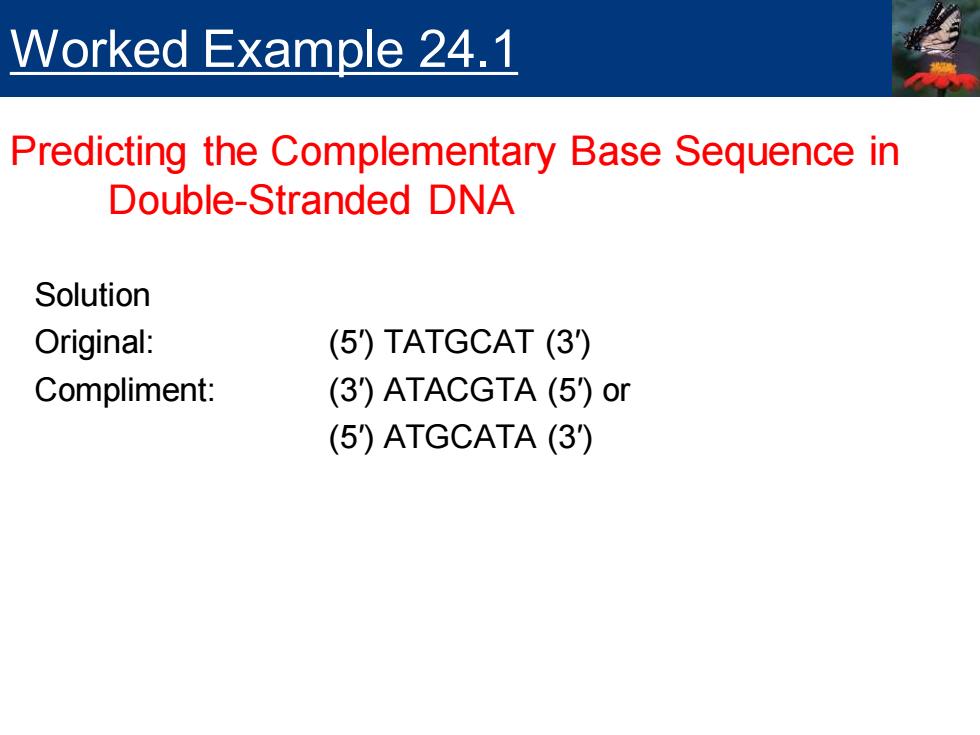
Worked Example 24.1 Predicting the Complementary Base Sequence in Double-Stranded DNA Solution Original: (5)TATGCAT(3) Compliment: (3)ATACGTA(5)or (5)ATGCATA(3)
Solution Original: (5′) TATGCAT (3′) Compliment: (3′) ATACGTA (5′) or (5′) ATGCATA (3′) Worked Example 24.1 Predicting the Complementary Base Sequence in Double-Stranded DNA
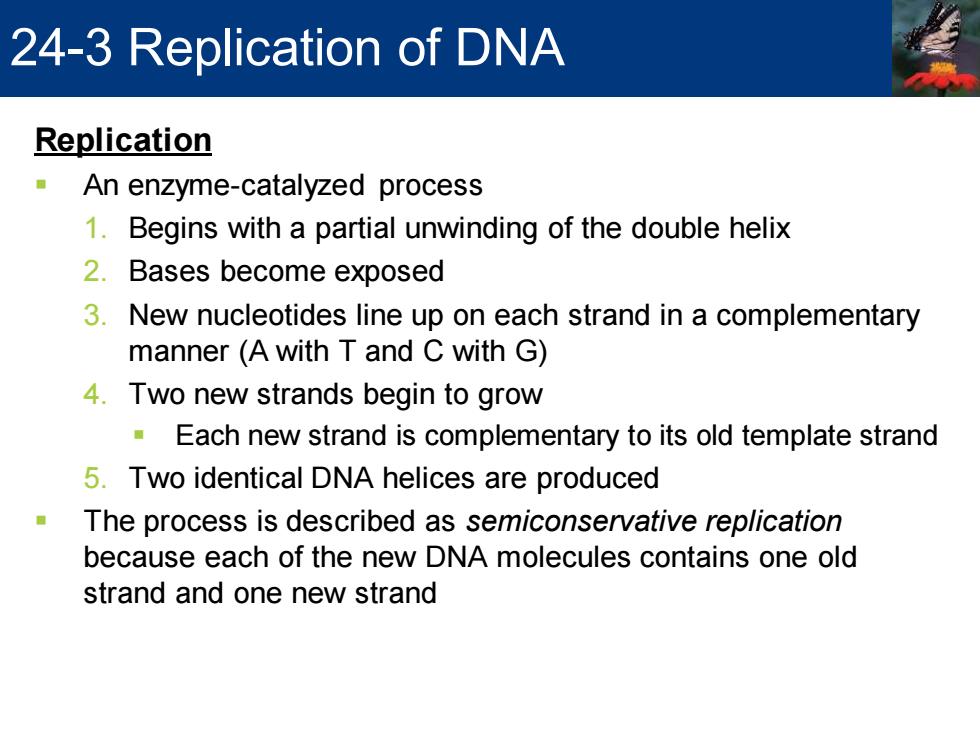
24-3 Replication of DNA Replication n An enzyme-catalyzed process 1.Begins with a partial unwinding of the double helix 2.Bases become exposed 3.New nucleotides line up on each strand in a complementary manner(A with T and C with G) 4.Two new strands begin to grow Each new strand is complementary to its old template strand 5.Two identical DNA helices are produced The process is described as semiconservative replication because each of the new DNA molecules contains one old strand and one new strand
Replication ▪ An enzyme-catalyzed process 1. Begins with a partial unwinding of the double helix 2. Bases become exposed 3. New nucleotides line up on each strand in a complementary manner (A with T and C with G) 4. Two new strands begin to grow ▪ Each new strand is complementary to its old template strand 5. Two identical DNA helices are produced ▪ The process is described as semiconservative replication because each of the new DNA molecules contains one old strand and one new strand 24-3 Replication of DNA
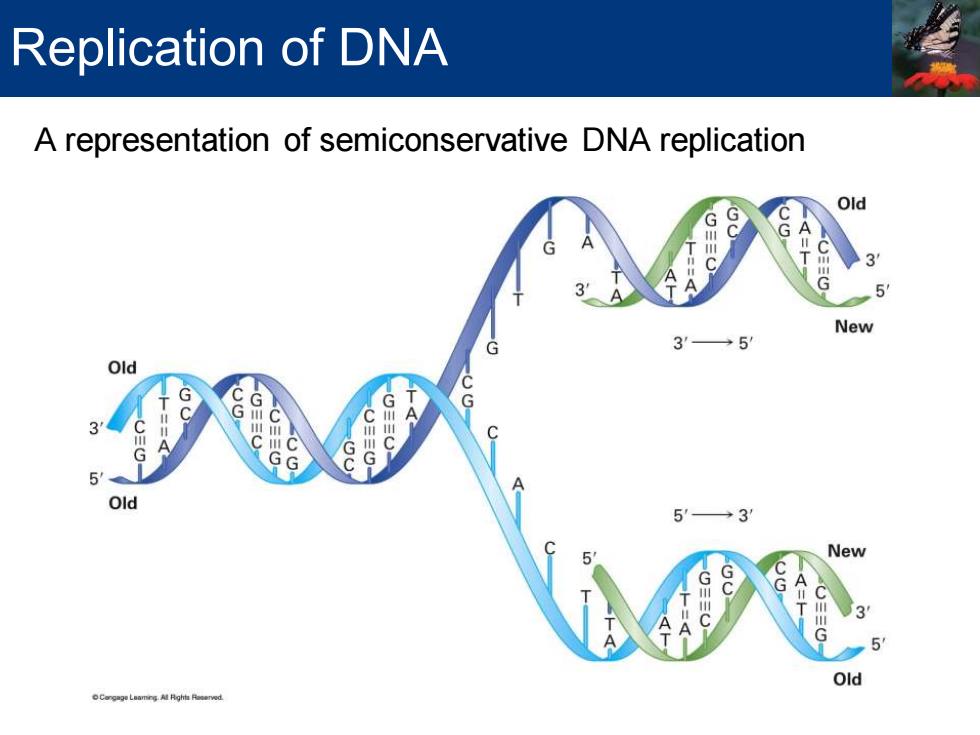
Replication of DNA A representation of semiconservative DNA replication Old G G F= 5 New →5 Old A 川G 8 G 5' Old 5→3 New G G A T 3 A A Old Cangage Laaming是Pghi Pre时
A representation of semiconservative DNA replication Replication of DNA
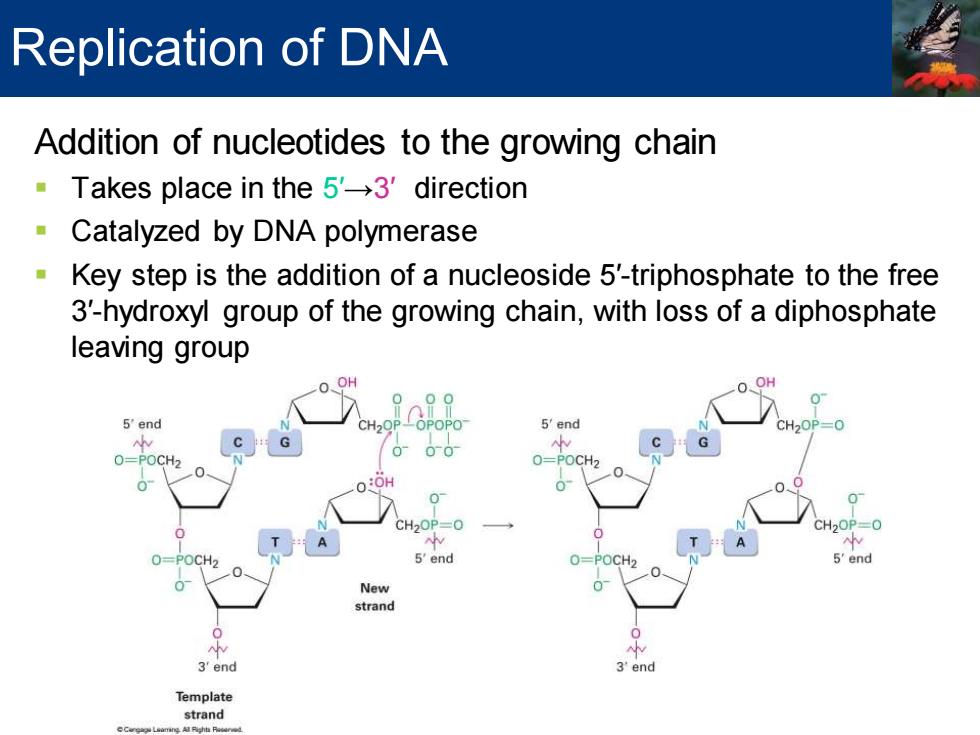
Replication of DNA Addition of nucleotides to the growing chain Takes place in the 53'direction Catalyzed by DNA polymerase Key step is the addition of a nucleoside 5'-triphosphate to the free 3'-hydroxyl group of the growing chain,with loss of a diphosphate leaving group 000 5'end CH2OP-OPOPO 5'end 0-0 0 POCH2 O=POCH2 OH CH2OP=O CH2OP=O 5'end 5'end New strand ● 3'end 3'end Template strand
Addition of nucleotides to the growing chain ▪ Takes place in the 5′→3′ direction ▪ Catalyzed by DNA polymerase ▪ Key step is the addition of a nucleoside 5′-triphosphate to the free 3′-hydroxyl group of the growing chain, with loss of a diphosphate leaving group Replication of DNA
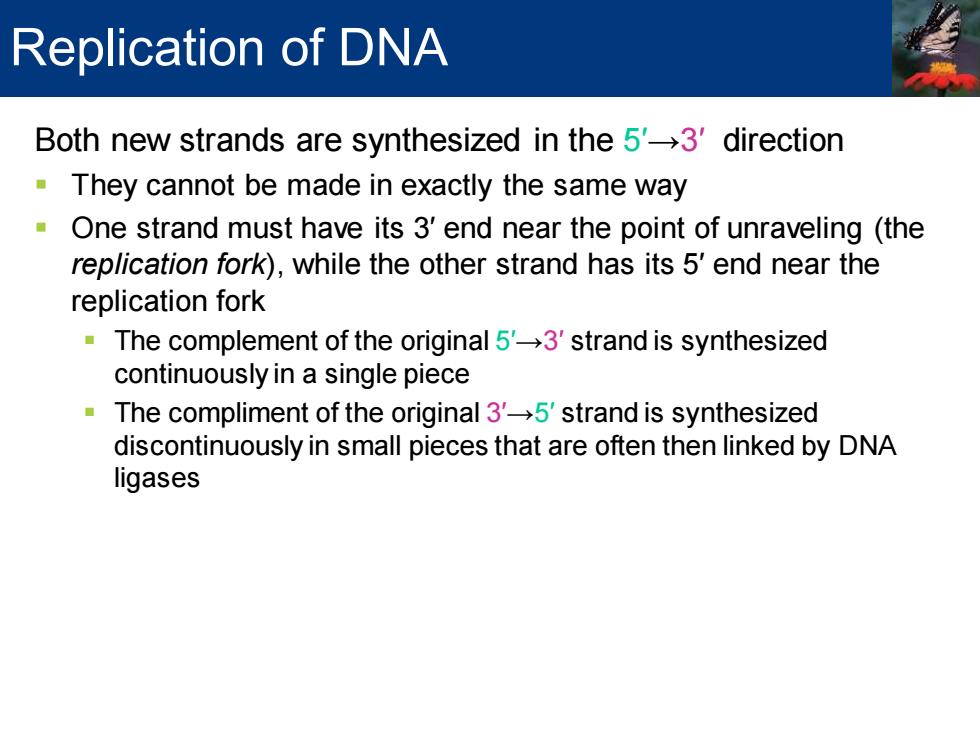
Replication of DNA Both new strands are synthesized in the 53'direction They cannot be made in exactly the same way One strand must have its 3'end near the point of unraveling (the replication fork),while the other strand has its 5'end near the replication fork The complement of the original 5'3'strand is synthesized continuously in a single piece The compliment of the original 3'5'strand is synthesized discontinuously in small pieces that are often then linked by DNA ligases
Both new strands are synthesized in the 5′→3′ direction ▪ They cannot be made in exactly the same way ▪ One strand must have its 3′ end near the point of unraveling (the replication fork), while the other strand has its 5′ end near the replication fork ▪ The complement of the original 5′→3′ strand is synthesized continuously in a single piece ▪ The compliment of the original 3′→5′ strand is synthesized discontinuously in small pieces that are often then linked by DNA ligases Replication of DNA